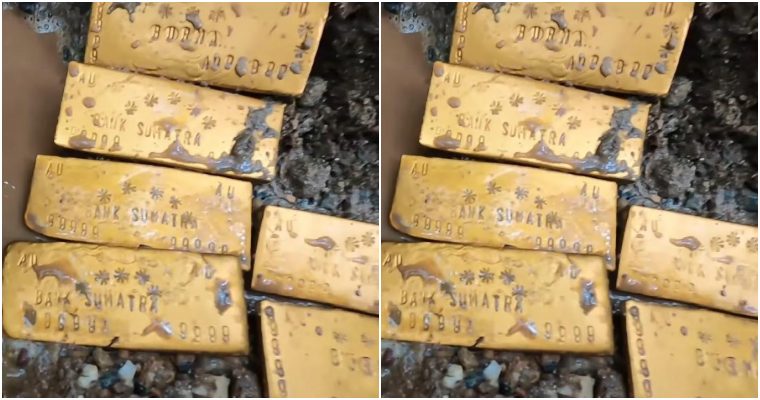Archaeologists find a 500-year-old shipwreck filled with gold coins. This discovery could solve the 16-century mystery about the vanishing of The Bom Jesus.
It was nearly 500 years ago when The Bom Jesus, a Portuguese sailing ship, inexplicably vanished while en route to India.

The ship was carrying gold, ivory and other treasures that have eluded even the most passionate treasure hunters.
But a recent shipwreck in the Namibia desert, however, could signal the end of the hunt.
The first signs of the wreck came when miners penetrated the ocean floor with bulldozers searching for diamonds.
However, instead of diamonds, they stumbled upon metals, woods, and pipes assembled in a strange mass.
Not sure what they had unearthed, the miners then called archaeologist Dieter Noli who quickly identified the objects as a shipwreck.
Noli said:
It just looked like a disturbed beach, but lying on it were bits and pieces.
I thought, ‘Oh, no, this is definitely a shipwreck.’
Amid the wreckage were 44,000 pounds of copper ingots, which marine biologist Bruno Werz believes enables the ship to survive its 500-year isolation.
Werz said:
[Organisms would have eaten] wooden remains. But the poison… protected part of those materials.

PD0812_Images_2A diver (Alex Tattersall) photographs the wreck of Giannis D at Abu Nuhas, Strait of Gubal, Egypt. Red Sea. The Giannis D was a greek owned cargo ship, which struck the reef and sank in April 1983.


Identifying The Bom Jesus
The shipwreck was loaded with thousands of mint condition, pure gold coins from Spain and Portugal.
According to historians, these coins date back between 1525 to 1538. The Bom Jesus sailed at some point during the 13-year timeframe.
Archaeologists also found a 16th-century manuscript called Memoria das Armadas. This document contained illustrations of the ships in fleets that set sail for India in the era.
Also, on the page outlining ships from 1533, it has an image of a ship with texts ‘Bom Jesus’ and ‘lost.’
Other treasures on the shipwreck included 2,000 mint-condition gold coins, Portuguese silver coins, and cannons made of bronze.
There were also more than 50 elephant tusks and navigational tools.
Noli said:
We figured out the ship came in, it hit a rock, and it leaned over.
The superstructure started breaking up, and the chest with the coins was in the captain’s cabin, and it broke free and fell to the bottom of the sea intact.
In breaking up, a very heavy part of the side of the ship fell on that chest and bent some of the coins.
You can see the force by which the chest was hit, but it also protected the chest.
World heritage site UNESCO has now placed the treasure trove under protection, naming it ‘one of the most important shipwrecks finding ever.’
Source: amazingunitedstate














